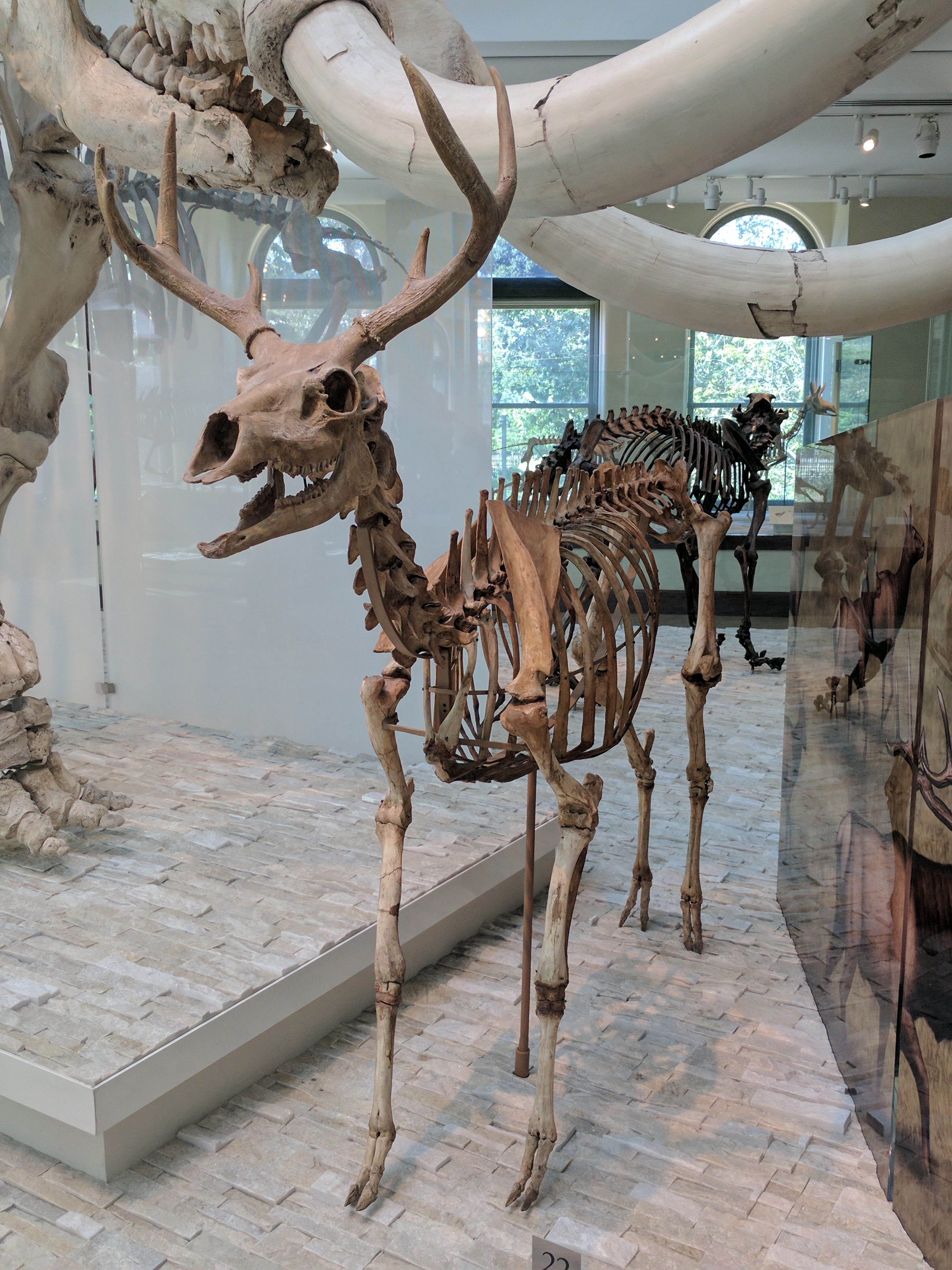|
Navajoceros Fricki
''Odocoileus lucasi'' (historically ''Navahoceros fricki''), known commonly as the American mountain deer, is an extinct species of North American deer. Taxonomy Kurten described a species he called ''Navahoceros fricki'' in 1975. However, his analysis has been questioned on technical grounds and new paleontological data. Kurten's analysis was based on averages of length of dissociated bones (samples sizes 9–52), without specifying the sex or age of the source animals, and without providing standard deviations to let the reader know about variability due to sex and age. One comparative element he used was the skeletal measurements of a single mule deer, but he did not provide the data on sex, age or locality. However, from data provided by Klein (1964) and McMahon (1975), the relative lower leg length of mule deer can vary at least by 22%. Kurten also stated that ''Navahoceros'' resembled ibex (''Capra ibex'') based on short metapodials which made him label the ''Navahoceros ... [...More Info...] [...Related Items...] OR: [Wikipedia] [Google] [Baidu] |
Pleistocene
The Pleistocene ( , often referred to as the ''Ice age'') is the geological Epoch (geology), epoch that lasted from about 2,580,000 to 11,700 years ago, spanning the Earth's most recent period of repeated glaciations. Before a change was finally confirmed in 2009 by the International Union of Geological Sciences, the cutoff of the Pleistocene and the preceding Pliocene was regarded as being 1.806 million years Before Present (BP). Publications from earlier years may use either definition of the period. The end of the Pleistocene corresponds with the end of the last glacial period and also with the end of the Paleolithic age used in archaeology. The name is a combination of Ancient Greek grc, label=none, πλεῖστος, pleīstos, most and grc, label=none, καινός, kainós (latinized as ), 'new'. At the end of the preceding Pliocene, the previously isolated North and South American continents were joined by the Isthmus of Panama, causing Great American Interchang ... [...More Info...] [...Related Items...] OR: [Wikipedia] [Google] [Baidu] |

